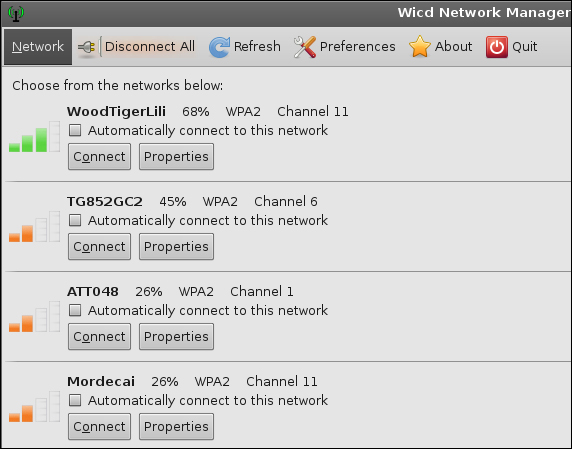The next thing we want to do is explore the wireless networks that are around us. The first tool we will use within BackTrack is not actually a hacking tool, but it does work for surveying the networks around us and identifying our wireless zone. Navigate to Applications | Internet | Wicd Network Manager.
This will open the tool; if you get a bus error, click on OK. The tool should open and present a window similar to the one shown in the next screenshot:

As you can see, the Wicd Network Manager does provide the channel and additional information about the card, so before we go further, we need to discuss what the channels are. In wireless, we have a particular frequency on which the signal is propagated; if everyone is on the same frequency, the result is saturation. So to avoid that, we use different channels for separation and to not overload or saturate a channel. You are probably wondering what channel you should use. Well, this can be a complicated question. This is...



